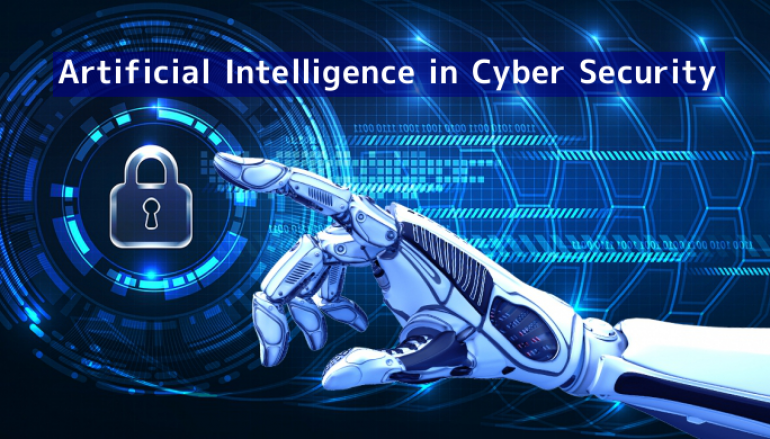
In today's digital landscape, businesses face a myriad of threats that can jeopardize their operations, reputation, and bottom line. Among these threats, two stand out as particularly insidious: artificial intelligence (AI) and cyber attacks. While AI promises transformative capabilities, its misuse or exploitation can lead to devastating consequences for organizations. Similarly, cyber attacks continue to evolve in sophistication, posing significant risks to businesses of all sizes. Understanding the intersection of AI and cyber attacks is essential for any business looking to safeguard its interests in the digital age.
The Power and Peril of Artificial Intelligence
Artificial intelligence has emerged as a game-changer across industries, offering unparalleled opportunities for automation, optimization, and innovation. From predictive analytics to personalized recommendations, AI-driven technologies have enabled businesses to streamline processes, enhance decision-making, and deliver superior customer experiences. However, the same capabilities that make AI valuable also make it a potential tool for malicious actors.
One of the primary concerns surrounding AI is its susceptibility to manipulation and misuse. As AI systems become increasingly sophisticated, they can be exploited to impersonate individuals, generate convincing fake content, and launch targeted attacks with unprecedented precision. Deepfake technology, for example, allows malicious actors to create highly realistic but entirely fabricated audio and video content, posing significant risks to businesses' reputations and integrity.
Moreover, AI-powered cyber attacks have the potential to outpace traditional defense mechanisms. Adversarial machine learning techniques enable attackers to evade detection, adapt their tactics in real-time, and exploit vulnerabilities with greater efficiency. As businesses rely more heavily on AI for critical functions such as fraud detection and threat mitigation, they must remain vigilant against the possibility of AI-enabled attacks targeting their systems and data.
The Evolving Threat Landscape of Cyber Attacks
Cyber attacks have long been a concern for businesses, but the landscape is constantly evolving, presenting new challenges and opportunities for malicious actors. Today's cyber threats encompass a wide range of tactics, including phishing scams, ransomware attacks, and supply chain compromises, among others. Moreover, the proliferation of connected devices and the rise of the Internet of Things (IoT) have expanded the attack surface, providing attackers with more entry points into corporate networks.
One of the most alarming trends in recent years is the increasing sophistication and frequency of cyber attacks. Nation-state actors, criminal organizations, and lone hackers alike are leveraging advanced techniques to breach defenses, steal sensitive information, and disrupt operations. The rise of ransomware-as-a-service (RaaS) platforms has made it easier than ever for even novice attackers to launch devastating ransomware attacks against businesses, holding their data hostage until a ransom is paid.
Furthermore, the interconnected nature of the modern business ecosystem means that cyber attacks can have far-reaching consequences. A breach at one organization can result in cascading failures across supply chains, financial markets, and critical infrastructure, amplifying the impact and complicating response efforts. As businesses become increasingly reliant on digital technologies for everyday operations, the potential fallout from cyber attacks looms larger than ever before.
The Imperative of Proactive Defense
Given the potent combination of AI and cyber attacks, businesses must adopt a proactive stance to defend against emerging threats. This requires a multi-faceted approach that encompasses technological solutions, employee training, and strategic partnerships. Investing in robust cybersecurity measures, such as intrusion detection systems, encryption protocols, and endpoint security solutions, is essential for mitigating the risk of cyber attacks.
Additionally, businesses must prioritize cybersecurity awareness and education among employees at all levels of the organization. Human error remains one of the leading causes of security breaches, so fostering a culture of vigilance and accountability is crucial for minimizing vulnerabilities. Regular training sessions, simulated phishing exercises, and clear security policies can help employees recognize and respond to potential threats effectively.
Collaboration with industry peers, government agencies, and cybersecurity experts is also instrumental in staying ahead of evolving threats. Information sharing initiatives, threat intelligence exchanges, and joint exercises can provide valuable insights into emerging attack vectors and best practices for defense. By leveraging collective expertise and resources, businesses can strengthen their cybersecurity posture and reduce the likelihood of successful attacks.
Conclusion
In an era defined by rapid technological advancement and persistent cyber threats, businesses must remain vigilant to safeguard their interests and assets. The convergence of AI and cyber attacks presents both unprecedented opportunities and risks, requiring organizations to adopt a proactive approach to defense. By investing in robust cybersecurity measures, prioritizing employee awareness and education, and fostering collaborative partnerships, businesses can mitigate the risk of AI-enabled cyber attacks and protect against potential harm. In doing so, they can uphold trust, maintain resilience, and thrive in an increasingly digital world.




